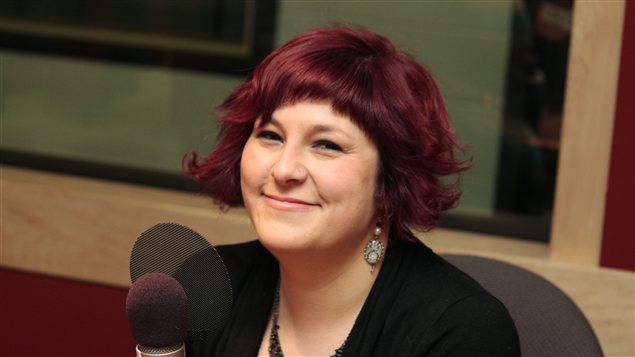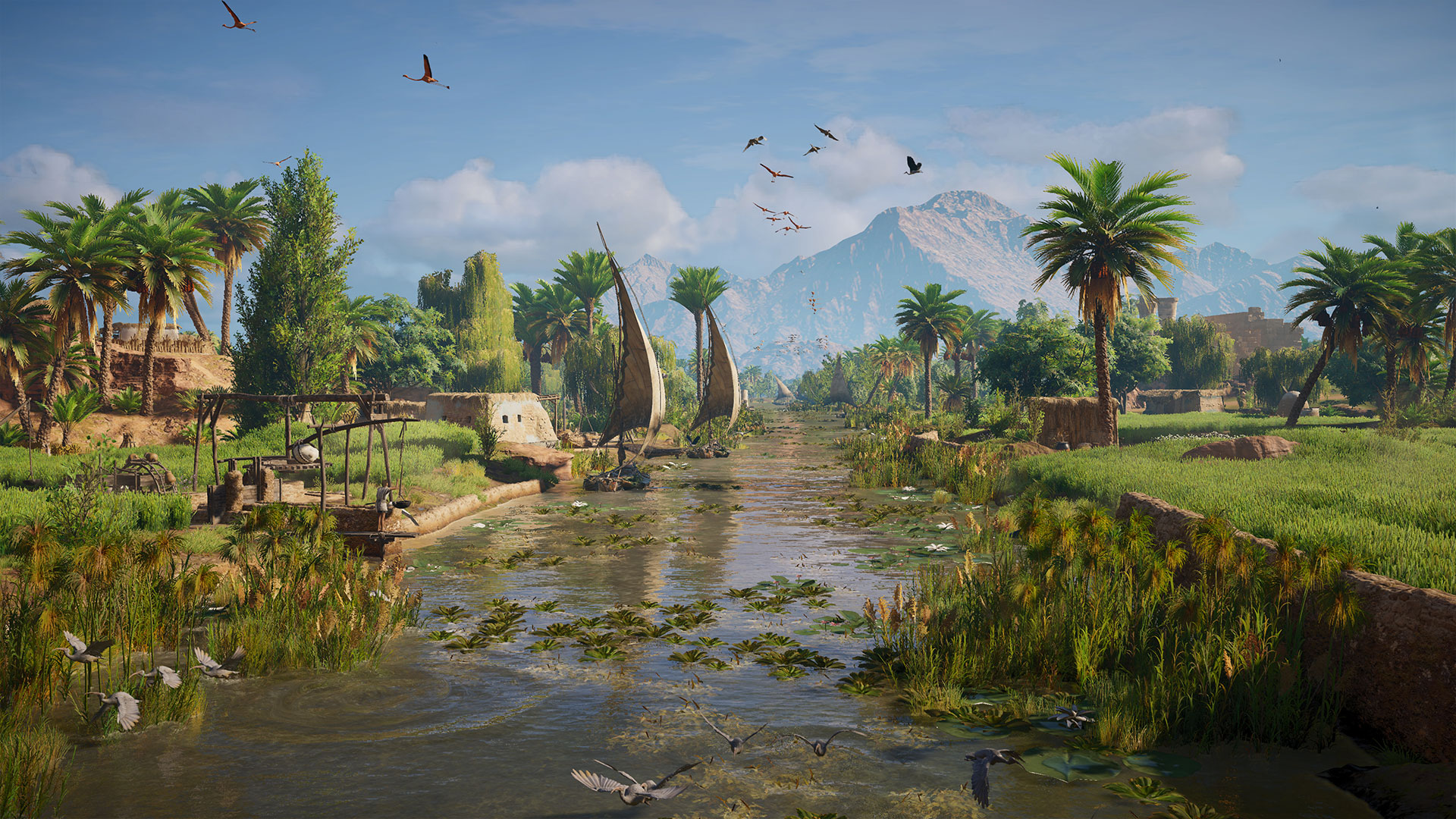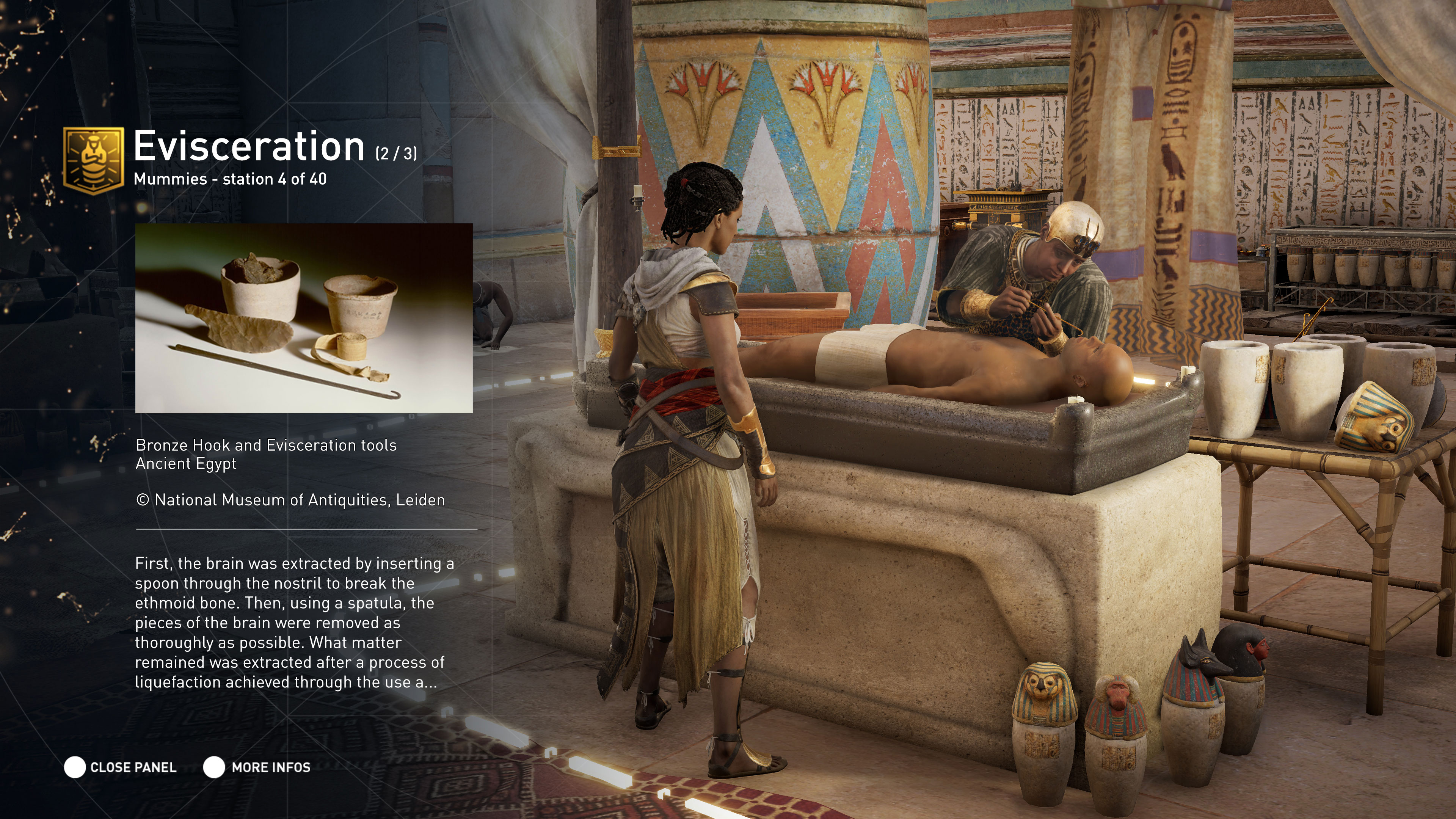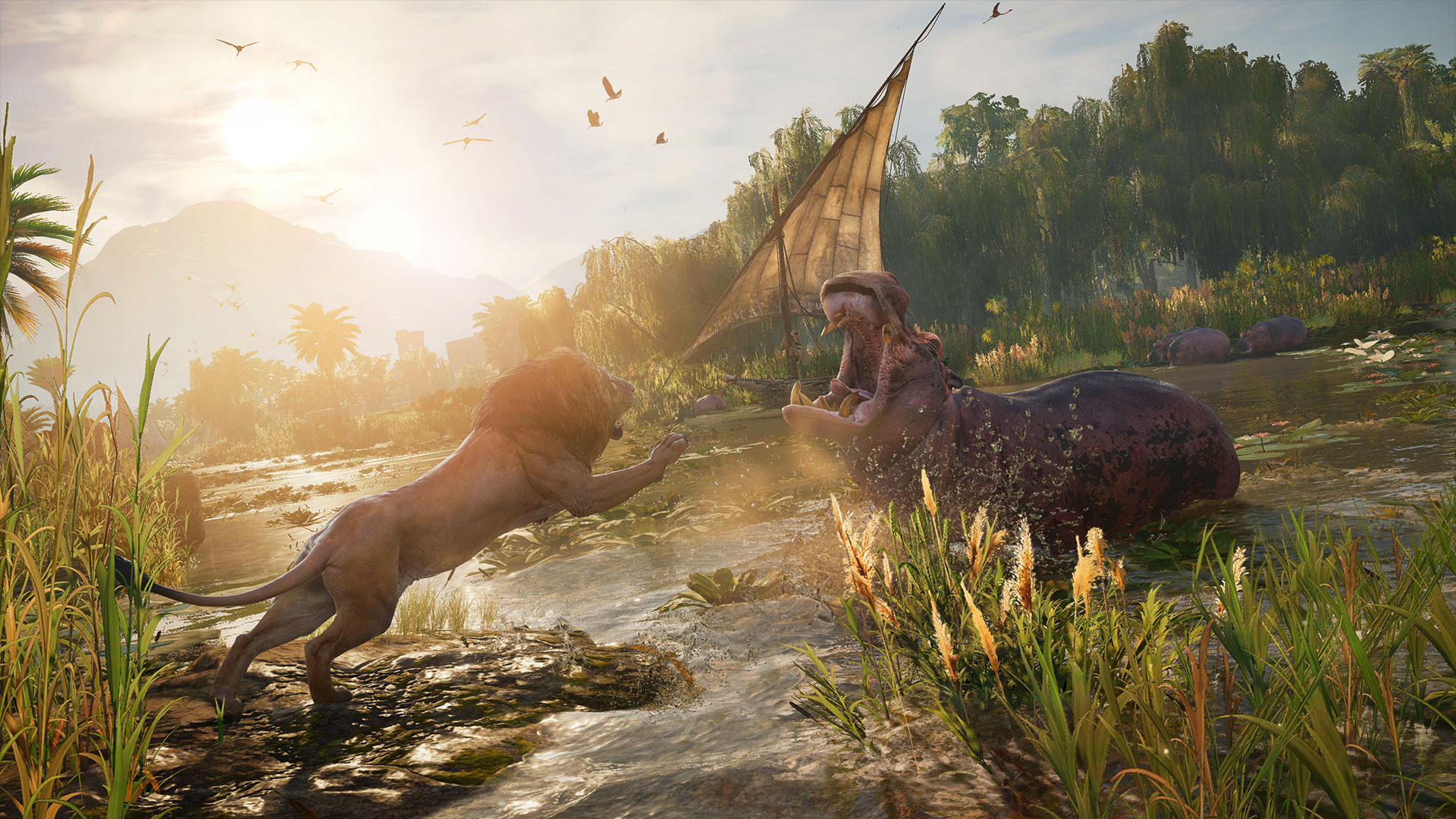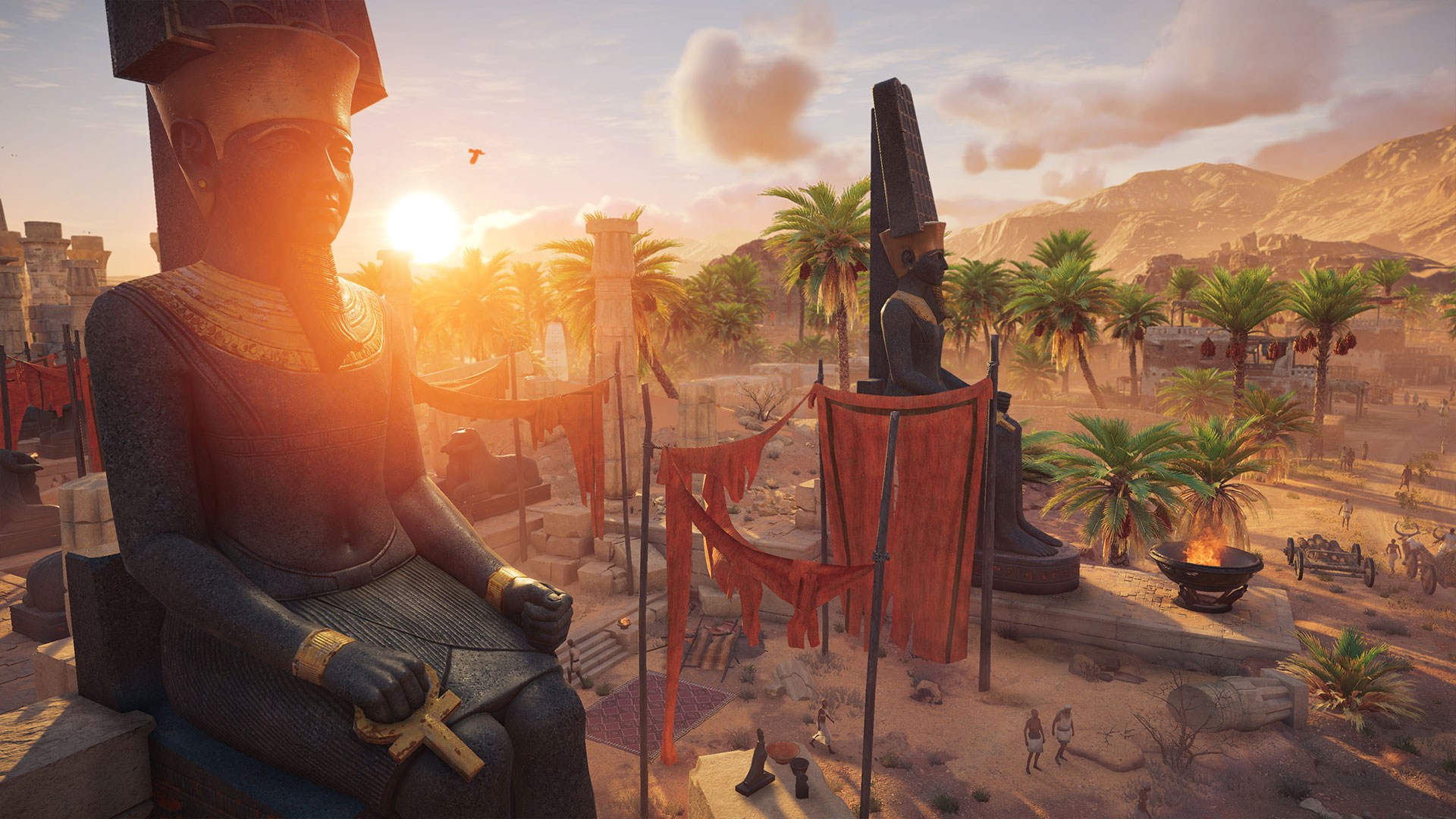
Between concept art, visual effects, environment layout, lighting, audio and other elements of design, it takes a great deal of work to bring a video game world to life. When it comes to recreating a real, historic setting, however, yet another piece of the puzzle must be accounted for — authenticity.
Depicting the look, culture, dialect and people of actual real-world locations is essential in making the virtual world feel as accurately recreated as possible. That’s certainly easier said than done, though, especially when the locale in question is over 2,000 years old.
That’s the problem Ubisoft Montreal encountered with the ancient Egypt-set Assassin’s Creed: Origins, the latest entry in the popular historical action-adventure series. While all games in the series have taken place in the past — such as 15th century Italy in Assassin’s Creed II and the 16th century pirate-filled Caribbean in Assassin’s Creed IV: Black Flag — these locales all benefited from extensive record-keeping and research having been done on them.
On the other hand, 49 B.C. ancient Egypt isn’t as well-documented, so to ensure the game’s historical accuracy was up to snuff, Ubisoft Montreal went looking for a homegrown historian to consult during development. Who they found was Evelyne Ferron, Egyptologist and professor of history at the Université de Sherbrooke and a professor of general history, research, and policy methodology at Collège Mérici in Quebec City. She’s also hosted weekly broadcasts on Radio-Canada for seven years.
MobileSyrup spoke with Ferron on the phone to hear what she had to say about her involvement in the game’s development, interesting historical Egyptian elements and the benefits of gaming as an educational tool.
Question: Given your work as a professor in multiple post-secondary institutions, it must have been quite a different experience for you to collaborate on a major video game such as this. What drew you to the Assassin’s Creed: Origins project and how did you get involved?
Ferron: “I’m really into making history accessible to everybody. Video games are another way to reach students and the general public with history and I was really curious to see how it works. So when they offered me an opportunity to collaborate on Origins, which is about ancient Egypt, my specialty, I said yes, I didn’t even question it. [laughs] I was reached out to at the very beginning of [development], so more than four years ago.
Once they got the okay to set the new game in ancient Egypt in 49 B.C., in the time of Cleopatra, the big boss, [creative director] Jean Guesdon, started looking for someone in Québec to help his team to understand what life was like in ancient Egypt.
He was listening to me on the radio so he knew about me, he liked the way I was able to help people live through history. Once he saw that my specialty was Greco-Roman Egypt and more specifically the natural environments, the oasis, he thought I was the perfect one to help them start the project.”
Q: What did your involvement look like on the project? What were some of the parts you helped out with, specifically?
Ferron: “At first, when I went to their office in Montreal and they showed me their ideas, I thought it was completely crazy because the time of Cleopatra is not that well-documented. But they were like ‘hey, that’s a good idea, we’ll have more freedom to work with the period if some documentation is lacking.’ I was like ‘ah, now I see how you think.’ [laughs]
The first two years of the project I worked to really help the different teams create the world. Afterwards, they were working on more specifics so I came back more towards the end [of development] to look at it and say ‘oh, okay, that’s good!’ What was Egypt at the time of Cleopatra? What about the environment, the animals, the water? Egypt is a very, very peculiar environment.
You have the Nile river, yes, but the oasis, as an example, is under the sea level. And in the Sahara desert you can have streams of water coming out in the oasis. As for the climate — what were the kinds of sandstorms that [Egypt] was experiencing? This would all create the environment which was really crucial to such a game because it’s not based this time in only a city, now it’s an entire country. This game was really different.
I also answered a lot of questions through emails — once they realized that ancient Egypt was really complex, I got a lot of them! [laughs] I also helped the team, most specifically the art director’s team, Raphael Lacoste, to figure out things like what would houses look like and what were the colours used at the time. One specific thing I had to think about was the fact that at the time of Cleopatra, the pyramids of course were there, but they were old at the time, more than 2,000 t0 2,500 years old.
So we knew that they still had the white cover of limestone, but they also needed to be faded by the sand because the sand was really washing up everything in Egypt. If you don’t add colours to the monuments then there would be no colours left. If you look closely at the pyramids in the game, you can see that they’re white, yes, but they’re not perfect — the white is faded and some pieces are lacking. We worked to figure out what it was all looking like — it’s a strange way of working for a historian, but it’s fantastic at the same time.”
Q: The Discovery Tour Mode [that gives players a guided, combat-free way to explore and learn more about ancient Egypt] is a very unique feature in video games. What involvement did you have in the conception and implementation of that mode?
Ferron: I know that the team thought about adding it for a very long time. I know teachers were really asking the team to create something that would be for educational purposes only. Because of course if you used the game in class, there would be the challenges of having to fight, which is difficult if you just want to show it to your students. They asked Ubisoft to create something that can be used actually in class and this is what they created. It’s the same world, but you walk through it without anyone coming to attack you. [laughs]
You have different stations and when you reach one, you have a written explanation — an example being the mummification process — but you’ll also have an orator who will tell you about mummification. You’ll even have sound, so there’s this ‘squishy’ sound when [non-player characters] take out the organs. It’s visual, it’s informative and also written down, so even depending on the age of the student, elementary, high school, university, it’s mostly universal.
What’s really interesting about it also — and this is the teacher in me speaking now — is the fact that a lot of parents buy games for their children but they don’t play with them. They’re not interested in the game. But this time, if they pick Discovery Mode, they can just discover ancient Egypt. This is something that I think is the beginning of a beginner picture for many years to come and I’m sure other companies will follow [Ubisoft’s] lead.
Q: What are you most excited for players to experience in Assassin’s Creed: Origins?
Ferron: Just to realize that the history of Egypt is not only pharaonic. To understand that Cleopatra was not Egyptian at all — that’s something not a lot of people know about. To figure out that Alexandria was a Greek city, to see the monuments when they’re coloured, to see that the world they had at the time is not something we see today, I think is really, really great.
I also really like the fact that people always think the biggest danger coming from animals in areas such as this were crocodiles. But in fact, Egyptians feared the hippopotamus the most, so Ubisoft took that example and you can be attacked by a hippopotamus in the water! [laughs]
The desert is not all the same, as it’s a very large country, so depending on the area, the vegetation, the environment, the animals — everything can be really different, which is very well pictured in the game. So you have very different types of real environments to visit and discover while you play, which is sometimes a bit more difficult with a city set during a very specific time.
This is something that [Ubisoft] worked out well and I’m really excited that people will discover an Egypt that they didn’t know about. Because when they think of Egypt, they think only of pyramids and mummies, so they will go much further in their knowledge, which I think is really good. I think it’s really nice that children and teenagers can experience and figure this all out.”
Read more about Discovery Tour here.
Assassin’s Creed: Origins is now available on PlayStation 4, Xbox One and PC. Stay tuned to MobileSyrup for more coverage on the game.
Image credit: Ubisoft, Radio Canada
MobileSyrup may earn a commission from purchases made via our links, which helps fund the journalism we provide free on our website. These links do not influence our editorial content. Support us here.

